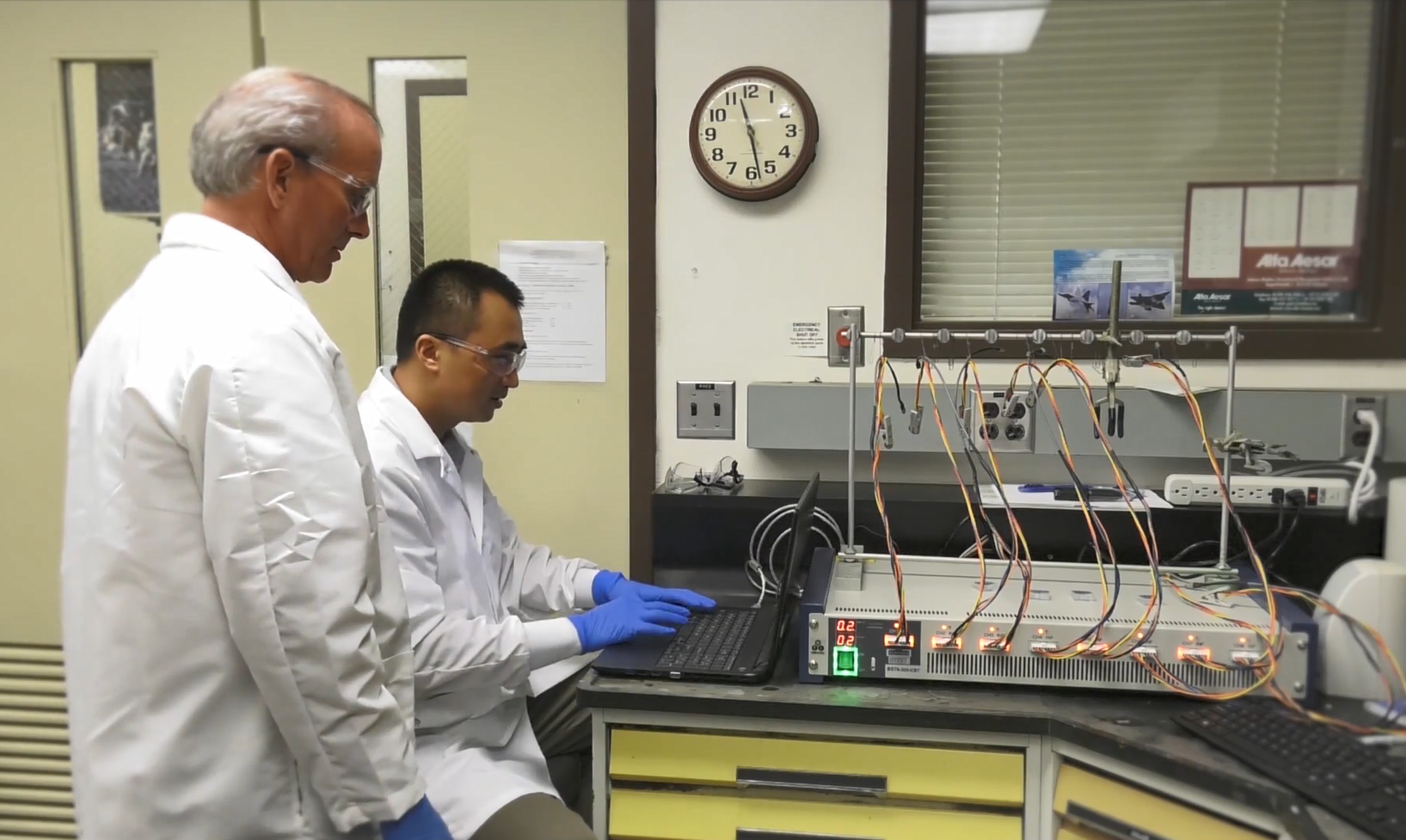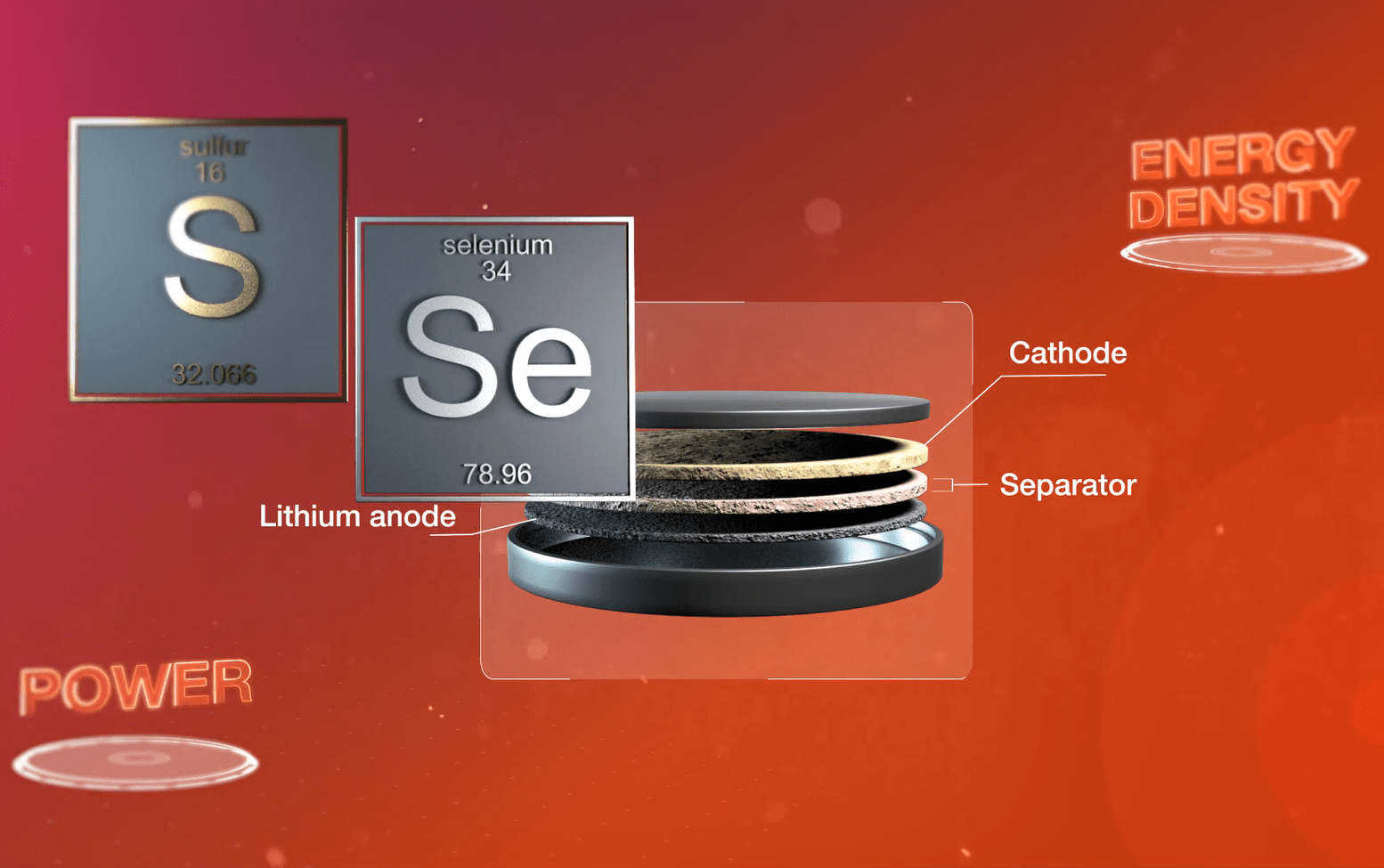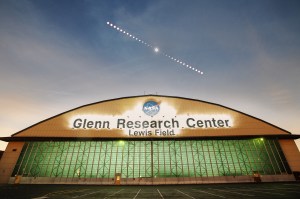NASA researchers are making progress with developing an innovative battery pack that is lighter, safer, and performs better than batteries commonly used in vehicles and large electronics today.
Their work – part of NASA’s commitment to sustainable aviation – seeks to improve battery technology through investigating the use of solid-state batteries for aviation applications such as electric propelled aircraft and Advanced Air Mobility.
Unlike industry-standard lithium-ion batteries, solid-state batteries do not contain liquids, which can cause detrimental conditions, such as overheating, fire, and loss of charge over time – issues that may sound familiar to anyone who uses large electronics.
Solid-state batteries do not experience these harmful conditions, and can hold more energy and perform better in stressful environments than standard lithium-ion batteries.
Now, after a few years of successful work by a NASA activity called the Solid-state Architecture Batteries for Enhanced Rechargeability and Safety (SABERS) the research has generated substantial interest from government, industry, and academia.
SABERS researchers have partnered with several organizations, as well as other projects within NASA Aeronautics, to continue developing its more resilient battery.
“SABERS continues to exceed its goals,” said Rocco Viggiano, principal investigator for SABERS at NASA’s Glenn Research Center in Cleveland. “We’re starting to approach this new frontier of battery research that could do so much more than lithium-ion batteries can. The possibilities are pretty incredible.”
New Developments
Battery performance is a key aspect in the development of more sustainable electric aircraft. These batteries must effectively store the huge amount of energy required to power an aircraft all while remaining lightweight – a key requirement in aviation.
However, the amount of energy a battery can store is only one side of the equation. A battery must also discharge this energy at a rate sufficient to power large electronics, such as an electric aircraft or unmanned aerial vehicle.
Put another way: a battery could be described like a bucket. A battery’s energy (or capacity) is how much the bucket can hold, while its power is how fast the bucket can be emptied. To power an electric aircraft, the battery must discharge its energy, or empty its bucket, at an extraordinarily fast rate.
To that end, SABERS has experimented with innovative new materials yet to be used in batteries, which have produced significant progress in power discharge. During the past year, the team successfully increased their battery’s discharge rate by a factor of 10 – and then by another factor of 5 – inching researchers closer to their goal of powering a large vehicle.
These new materials enable additional design changes.
The SABERS team realized solid-state architecture allowed them to change the construction and packaging of their battery to save weight and increase the energy it can store – the size of the battery’s bucket from the earlier analogy.
Instead of housing each individual battery cell inside its own steel casing, as liquid batteries do, all the cells in SABERS’s battery can be stacked vertically inside one casing. Thanks in part to this novel design, SABERS has demonstrated solid-state batteries can power objects at the huge capacity of 500 watt-hours per kilogram – double that of an electric car.
“Not only does this design eliminate 30 to 40 percent of the battery’s weight, it also allows us to double or even triple the energy it can store, far exceeding the capabilities of lithium-ion batteries that are considered to be the state of the art,” Viggiano said.
Safety is another key requirement for the use of batteries in electric aircraft. Unlike liquid batteries, solid-state batteries do not catch fire when they malfunction and can still operate when damaged, making them attractive for use in aviation.
SABERS researchers have tested their battery under different pressures and temperatures, and have found it can operate in temperatures nearly twice as hot as lithium-ion batteries, without as much cooling technology. The team is continuing to test it under even hotter conditions.
Partnerships and Future
This year, the main objective for SABERS was to show the battery’s properties meet its energy and safety targets while also demonstrating it can safely operate under realistic conditions and at maximum power.
SABERS has collaborated with several partners, including Georgia Tech, Argonne National Laboratory, and Pacific Northwest National Laboratory, to further this leading-edge research.
For example, the collaboration with Georgia Tech allowed researchers to utilize some different methodologies in their work and discover how they can improve their battery for practical use.
“Georgia Tech has a big focus on micromechanics of how the cell changes during operation. That helped us look at the pressures inside the battery, which then helped us improve the battery even more,” said Viggiano. “It also led us to understand from a practical standpoint how to manufacture a cell like this, and it led us to some other improved design configurations.”
SABERS also has engaged the expertise of multiple NASA centers and projects to achieve its objectives.
“We’ve had a lot of productive discussions on how others at NASA could leverage our work and potentially use our battery,” said Viggiano. “It’s been extremely rewarding to think about what could possibly come from it. We’ve seen SABERS grow from an idea we had at lunch one day to, potentially, an energy solution for aeronautics.”
SABERS is part of the Convergent Aeronautics Solutions project, which is designed to give NASA researchers the resources they need to determine whether their ideas to solve some of aviation’s biggest technical challenges are feasible, and perhaps worthy of additional pursuit within NASA or by industry.

































